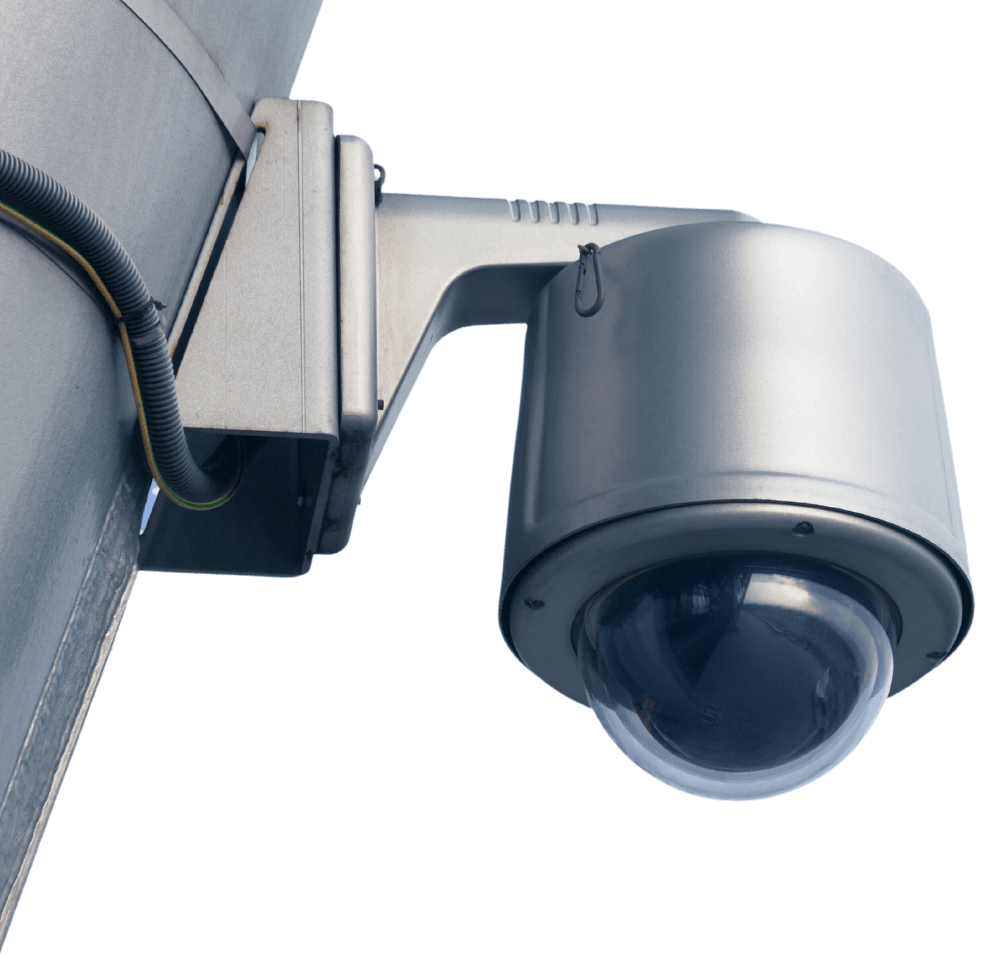Remote surveillance systems, often also referred to as CCTV (Closed Circuit Television), are a mainstay within the world of security. Since the first surveillance cameras were implemented to help combat crime back in the 1960s, continual advances have been made in the pursuit of ever-smarter and ever-greater systems. The difference between those initial cameras and today’s offerings are staggering.
The team here at Stok K9 Security Services wanted to examine the current trends and technology shaping the surveillance landscape, from image quality to artificial intelligence. If one thing is for certain? The future is crystal clear.
4K
4K definition isn’t simply reserved for domestic flat-screen TVs, it has revolutionised the security industry, as well! These ultra-high definition IP (Internet Protocol) cameras are preferable to the now comparatively outdated analogue cameras, not only due to their superior image quality, but less physical infrastructure (in the form of cabling, for instance) is required.

This lack of hardware, when paired with an already rapidly diminishing cost gap – all technologies cheapen over time – makes IP cameras the only real option for security firms worth their salt. 4K and UHD (Ultra High Definition) security cameras represent both the present and the future of asset protection, and are increasingly becoming the bare minimum which clients come to expect.
Field of vision

When people think of image quality, they tend to think solely of how clear the image is. This is only one component of a good security camera, however, with field of vision proving just as important. If your site needs a more all-encompassing approach, to cover a wide area, then the 360-degree field of vision offered by dome cameras is an ideal option.
If, on the other hand, you’re in need of something targeted on a more restricted, narrow location, then bullet cameras are just as effective, if not preferable.
A Smart Future
Up in the clouds
Amongst the only downsides of 4K and UHD remote surveillance systems is that they produce data, and lots of it. Storing and processing the quantities of information that these cameras manufacture requires extensive storage capabilities, something that many firms have struggled to come to terms with. One of the best ways of dealing with this, something that has widely been touted as the future of data intelligence, is cloud-based storage.
With most providers offering subscription-based services for cloud storage, and with bandwidth limitations beginning to be overcome, there are few reasons not to consider the cloud, moving forward. Security concerns, which have similarly contributed to the prevention of a more widespread adoption of cloud storage, are also being addressed more and more.
Artificial intelligence (AI)
Equally important in the progression of CCTV systems will be the further development of AI (Artificial Intelligence) – though perhaps more in state circles than within the private sector. If you take an example from the more extreme end of the spectrum, looking at China’s increase in CCTV usage, a 2018 report predicted that by the end of this year the country would be producing a staggering 6.4 exabytes of video per day. For context, that’s equivalent to 1.4 billion DVD’s worth of information.
Data storage management, therefore, whether cloud-based or otherwise, will be crucial in the continued prevention of criminal activities in the near to mid-term future. Technologies such as deep learning and facial recognition were once purely reserved for the realms of science fiction. Now, however, they’re very real and very exciting prospects in the field of surveillance.
Drone surveillance
Drones really put the remote in remote surveillance systems, and their capabilities in a security context is clear for all to see. Offering unrivalled freedom of movement and manoeuvrability, as well as high-quality video, it’s perhaps surprising that they’ve not ‘taken off’ in the way the sector perhaps thought they might have done by this point in time.
Costs, legislative issues and battery life are all issues that have hamstrung the technology’s progress as an aide to security firms, though this is changing. It’s not commonplace yet, but we wouldn’t be surprised if drones became part and parcel of many security firms’ strategies within the next decade, or so.
Integration & Set-Up (Knowhow)
Of course, it goes without saying that you can have the best equipment in the world, but without the expertise to integrate them into a broader security strategy, it counts for very little. In other words, when it comes to remote surveillance systems, it’s very easy to have “all the gear but no idea”…
Our surveillance
Here at Stok K9 Security Services, our surveillance provision is comprehensive and of the highest quality. Our systems include Box Network, Bullet Network and Vari-Focal Dome Network cameras, 4K NVRs (Network Video Recorders) as well as client-facing features such as a mobile app linked to the systems, for instance. Our systems also make use of the ‘H.265’ codec which drastically reduces the bandwidth required whilst maintaining high video-streaming quality.
Contact us for more information about out remote surveillance systems
We’re proud to have both the equipment and expertise necessary to robustly protect your business, whatever the industry. So, if you’d like to find out more about our remote surveillance systems, then get in touch! Contact Stok K9 Security Services today on 0800 002 5761 or by emailing us on info@stokk9services.com.

